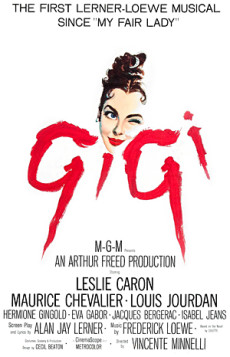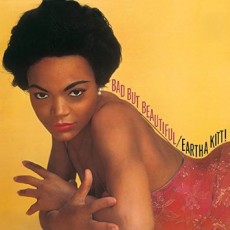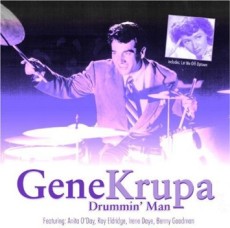
Daily Dose Of Jazz…
Mike Ellis was born in New York City in on January 18, 1957 where he was raised by artistically inclined parents during the fabulous Sixties. He began his musical training at age of eight on clarinet, piano and drums. By 19, he was working professionally and teaching.
Ellis paid his dues attending Berklee College, New School and the Institute of Artistic & Cultural Perception (I.A.C.P.) where Billy Pierce, Steve Lacy, Steve Grossman, Alan Silva and David Liebman were particularly helpful and influential as teachers and mentors during his early career.
Ellis’ eclectic approach to music has labeled it “World Jazz”, a term that may seem vague but it sums up what he’s been doing recently with Brazilian and African percussionists, seasoned international jazz artists and Siberian throat singers. After nearly 100 concerts in New York with Speak in Tones, he has performed alongside Antoine Roney, Graham Haynes, Terreon Gully, Phoenix Rivera, Taurus Mateen, Brian Carrott, Curtis Lundy, Bruce Cox, Daniel Moreno, just to name a few.
He recorded his last two projects in Salvador Bahia Brazil “Subaro” Speak in Tones and “Bahia Band” under his own name and on his label AlphaPocket Records. Some of the musicians on these projects include Jerry Gonzalez, Cheikh Tidiane Seck, Mo Brasil, Bira Reis, Adam Rudolf, Jean-Paul Bourelly and Darryl Hall.
Music has taken him around the world, from Moscow’s Tchaikovsky Hall to the Tokyo Jazz club scene and everything in between. Currently residing in Paris, he attends to his professorial and compositional duties while remaining active on the Parisian jazz scene performing regularly at Paris Clubs such as the Duc des Lombards, Sunset and the Baiser Sale. A few of his regular sidemen include John Betsch, J.J. Avenel, Michael Felberbaum, Brice Wassy, Bobby Few, Alain Jean Marie, Munir Hossn. All this, soprano saxophonist Mike Ellis accomplishes when he is not busy with projects in Brazil and New York.
More Posts: saxophone

Hollywood On 52nd Street
“Thank Heavens For Little Girls” is from the 1958 Academy Award-winning film Gigi. Frederick Loewe and Alan Jay Lerner composed the song and lyrics and it went on to win the Academy Award for Best original Song in 1958. A cover version by Billy Eckstine peaked at #8 in the UK Singles Chart in 1959. The film starred Leslie Caron, Maurice Chevalier and Louis Jordan.
The Story: Set in turn-of-the-20th century Paris, the film opens with Honoré Lachaille, a charming old roué among high society. Dodging marriage Honoré is concerned with his bored nephew who enjoys hanging out with his mamita, Madame Alvarez and her precocious and carefree granddaughter Gigi. However she is sent away to be groomed as a courtesan and learn etiquette and charm. The two young people spend a lot of time together with the thought of taking Gigi as a mistress. Finally Gaston finds the thought unbearable with the help of high society. Taking Gigi home, he wanders the streets until finally ending back at Madame Alvarez’s door asking for Gigi’s hand in marriage. They couple are elegant, beautiful, and happily married. Honoré has been a framing device for the film, which can be seen as a romantic victory of love over cynicism.
Sponsored By
www.whatissuitetabu.com

Daily Dose Of Jazz…
Eartha Mae Kitt was born Eartha Mae Keith on January 17, 1927 to a Cherokee/Black mother and German father on a cotton plantation in North, a small town in Orangeburg County near Columbia, South Carolina.
Raised by Anna Mae Riley, a Black woman whom she believed to be her mother, at age 8 she was sent to live with another family until Anna Mae death due to her man’s refusal to accept the child’s light complexion. She was ultimately sent to live with her biological mother Mamie Kitt in New York City.
Eartha began her career in 1943 with the Katherine Dunham Company, a relationship that lasted until 1948. As a member she appeared in the 1945 original Broadway production of the musical Carib Song. Orson Welles signed her 1950 to her first starring Broadway role as Helen of Troy in his staging of Dr. Faustus, followed by Shinbone Alley. During this decade she starred in films such as Mark of the Hawk, St. Louis Blues and Anna Lucasta.
A talented singer with a distinctive voice and unique style that became enhanced as she became fluent in French, by the early 1950s, she had six US Top 30 hits and a UK Top 10 hit “under The Bridges of Paris” with two more in 1963 and 1983. Kitt recorded such hits as Let’s Do It”, “Champagne Taste”, C’est Si Bon”, “Just An Old Fashioned Girl”, “Monotonous”, “Je Cherche Un Homme”, “Love For Sale” and “Santa Baby” among others.
Success found her way into television taking over the role of Catwoman in 1967 for the 3rd and final season of Batman. But in 1968, her career in America suffered due to President Lyndon B. Johnson after she made anti-war statements at a White House luncheon. It wasn’t until ten years later that she made a successful return to Broadway in the 1978 original production of the musical Timbuktu, receiving the first of her two Tony Award nominations; the second was for the 2000 original production of the musical The Wild Party.
Eartha toured and performed in Europe for many years and her English-speaking performances always seemed to be enriched by a soft French feel. She spoke four languages and sang in seven, which she effortlessly demonstrated in many of the live recordings of her cabaret performances. Over the course of her career from the Seventies until her death, Kitt voiced television commercials, wrote three autobiographies, had disco hits, was embraced by the gay community, continued making movies, making appearances on popular television shows, returned to Broadway and touring companies, and became a darling of the cabaret scene.
Eartha Kitt, actress, jazz singer, cabaret star, dancer, stand-up comedienne, activist and voice artist, winner of three Emmy Awards, and recipient of a Hollywood Walk of Fame Star was a true renaissance woman who screamed her way out of this world, passed away in her home on Christmas Day, December 25, 2008.
More Posts: vocal

Daily Dose Of Jazz…
Oli Bott was born January 16, 1974 in Hofheim am Taunus, Germany. He learned his trade on the vibraphone first in his native town under the tutelage of drummer Detlef Biedermann. Subsequent study in music was at the Berklee College of Music in Boston with Gary Burton, Bob Brookmeyer, Phil Wilson, Greg Hopkins, John LaPorta and Hal Crook, completing in 1996 with a diploma in Jazz Composition.
As a freelance musician in Berlin he has received several grants from the Berlin Senate and composition commissions for his own jazz orchestra. Bott’s awards include the NDR music prize for jazz directors, 1st prize at the Leipzig Improvisation competition, the Europ Jazz Contest and the Wayne Shorter Award.
Vobraphonist Oli Bott is currently active as a musician in various bands. In addition to his work as a composer and conductor for his twelve-headed “Oli Bott Orchestra”, he is also leads a quartet “Vibratanghissimo”. It is a project with original compositions as well as those by Astor Piazzolla, originally composed for bandoneon. They are now being reinterpreted on the vibraphone, part of the repertoire of this group. With his partner, guitarist Thomas Wallisch, he also performs his own compositions on “Thomas Wallisch & Oli Bott Duo”.
More Posts: vibraphone

Daily Dose Of Jazz…
Gene Krupa was born Eugene Bertram Krupa on January 15, 1909 in Chicago, Illinois. Originally groomed for the priesthood by his parents, he He spent his grammar school days at various parochial schools and upon graduation, attended Saint Joseph’s College for a year, but later decided it was not his vocation. He studied with Sanford A Moeller and began playing drums professionally in the mid-1920s with bands in Wisconsin.
Gene broke into the Chicago scene in 1927, when he was picked by MCA to become a member of Thelma Terry and Her Playboys, the first notable American Jazz band to be led by a female musician. The Playboys were the house band at The Golden Pumpkin nightclub in Chicago and also toured extensively throughout the eastern and central United States.
Making his first recordings in 1927 with a band under the leadership of guitarist Eddie Condon and Red McKenzie, Krupa recorded others on the Chicago scene such as Bix Beiderbecke. His big influences during this time were Tubby Hall, Zutty Singleton and Baby Dodds.
By 1934 he joined Benny Goodman’s band, where his featured drum work made him a national celebrity. His tom-tom interludes on their hit “Sing, Sing, Sing” were the first extended drum solos to be recorded commercially. He made a cameo appearance in the 1941 film, Ball of Fire, in which he and his band performed an extended version of the hit Drum Drum Boogie, which he had composed with trumpeter Roy Eldridge. He also appeared in The Best Years Of Our Lives in 1946 during the waning years of the big band era.
1951 saw Gene leading a trio or quartet, appeared regularly with the Jazz At The Philharmonic band, never quite adjusted to be-bop, and by the end of the decade returned to Hollywood appearing in such films as The Glenn Miller Story, The Benny Goodman Story and had a biography starring Sal Mineo titled The Gene Krupa Story, featuring a cameo appearance by Red Nichols.
During the 1960s he played clubs in Washington, DC and New York but increasingly troubled by back pain, he retired in the late 1960s and opened a music school. He would give instruction to future KISS drummer Peter and Jerry Nolan of the New York Dolls. He occasionally played in public in the early 1970s until shortly before his death. Gene Krupa, big band drummer, band leader, actor and composer, known for his highly energetic and flamboyant style passed away on October 16, 1973.
More Posts: drums



